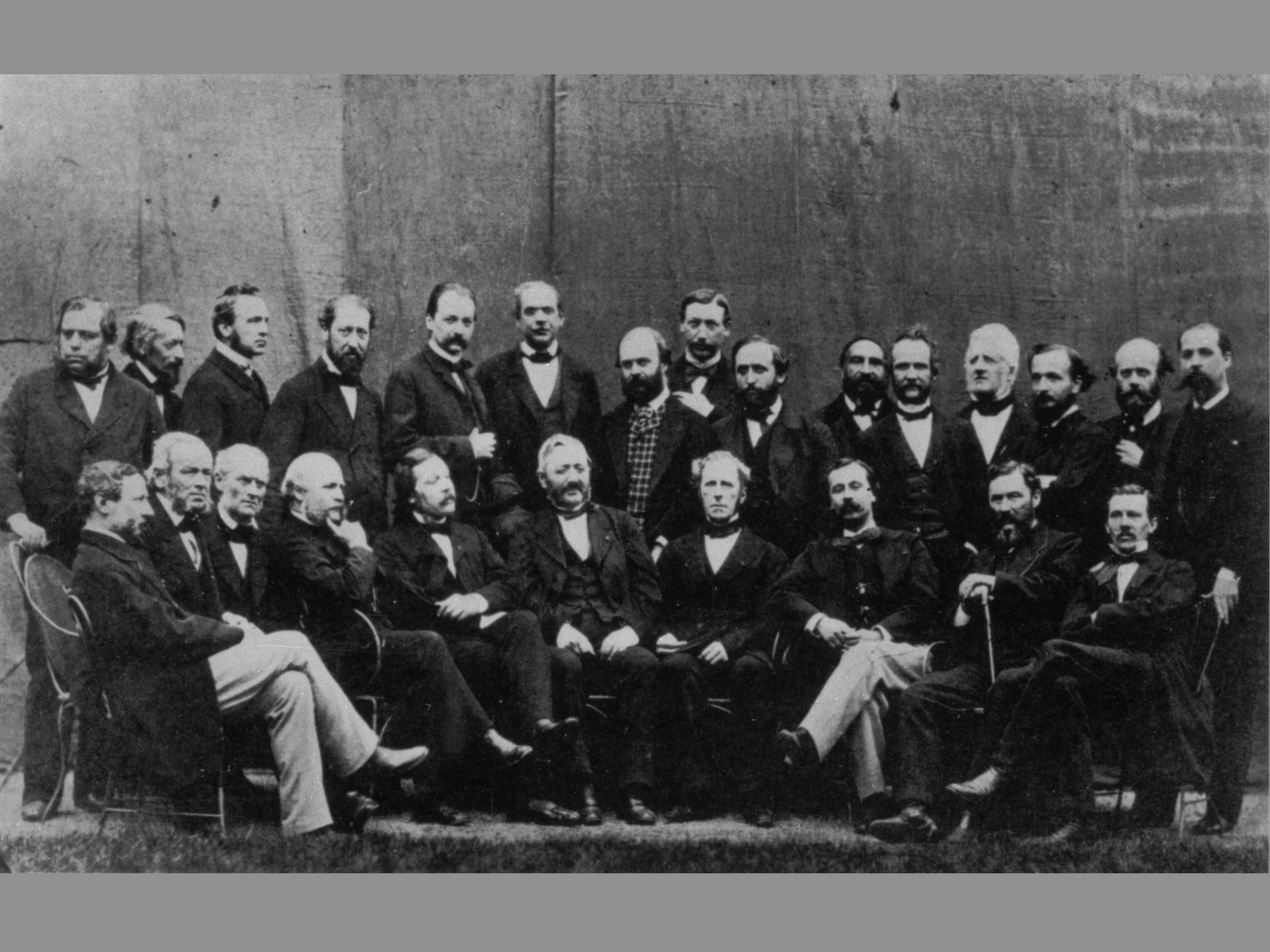1 March – 17th May 1865: First International Telegraph Conference in Paris
This image of the "Founding Fathers" of the International Telecommunication Union (ITU) shows the heads of delegations at the first International Telegraph Conference held in Paris in 1865.
After two and a half months of negotiations, the delegates from twenty European States – Austria, the Grand Duchy of Baden, Bavaria, Belgium, Denmark, France, Greece, Hamburg, Hanover, Italy, the Netherlands, Portugal, Prussia, Russia, Saxony, Spain, Sweden and Norway, Switzerland, Turkey, Wurtemberg – signed the first International Telegraph Convention, an intergovernmental treaty that established the basic principles for international telegraphy.
Annexed to, and supplementing, the Convention were the Regulations for International Service (also known as the Telegraph Regulations). The Regulations contained provisions which dealt with the international telegraph network; the service provided by telegraph offices; charging systems, the composition of tariffs and the collection of charges; signaling codes; the preparation of telegrams and the counting of words; the routing, transmission and delivery of telegrams; telegrams relating to the safety of life; government telegrams; and press telegrams and other special cases.
A succession of conferences followed, revising and redrafting the Telegraph Regulations to keep up with technical and administrative progress. Following the patenting of the telephone in 1876 and the subsequent expansion of telephony, ITU decided in 1885 to add regulations for "the international telephone service" to the Telegraph Regulations.
These regulations were substantially expanded at the 1903 London Telegraph Conference and eventually became a separate set of regulations – the Telephone Regulations – at the 1932 Madrid Telegraph Conference. These Regulations contained provisions which dealt in particular with the international telephone network, methods of charging and international accounting. These Regulations also defined various categories of calls and laid down priorities for the setting up of calls.
At the 1988 World Administrative Telegraph and Telephone Conference in Melbourne, the Telegraph and Telephone Regulations were merged into a single set of regulations, the International Telecommunication Regulations (ITRs). The ITRs set out principles for ensuring that networks can connect with each other smoothly, and that international services will be offered in a fair and efficient manner. They comprise ten articles dealing with such matters as cooperation among national administrations; giving priority to emergency telecommunications, and how to calculate the charges for traffic exchanged between carriers in different countries. They are still in force today.
More information:
